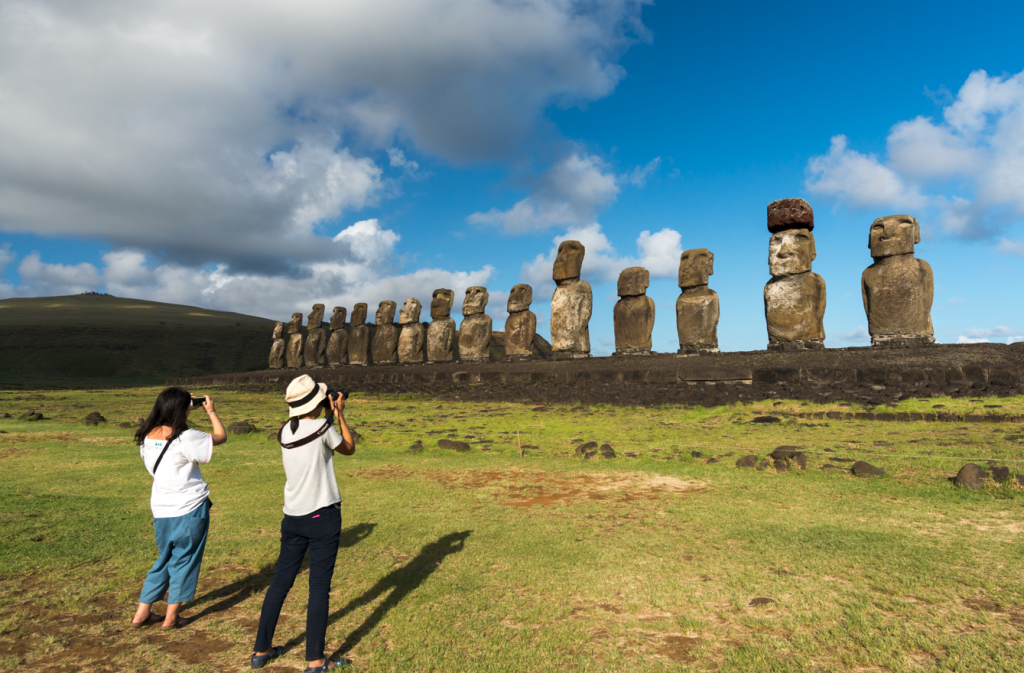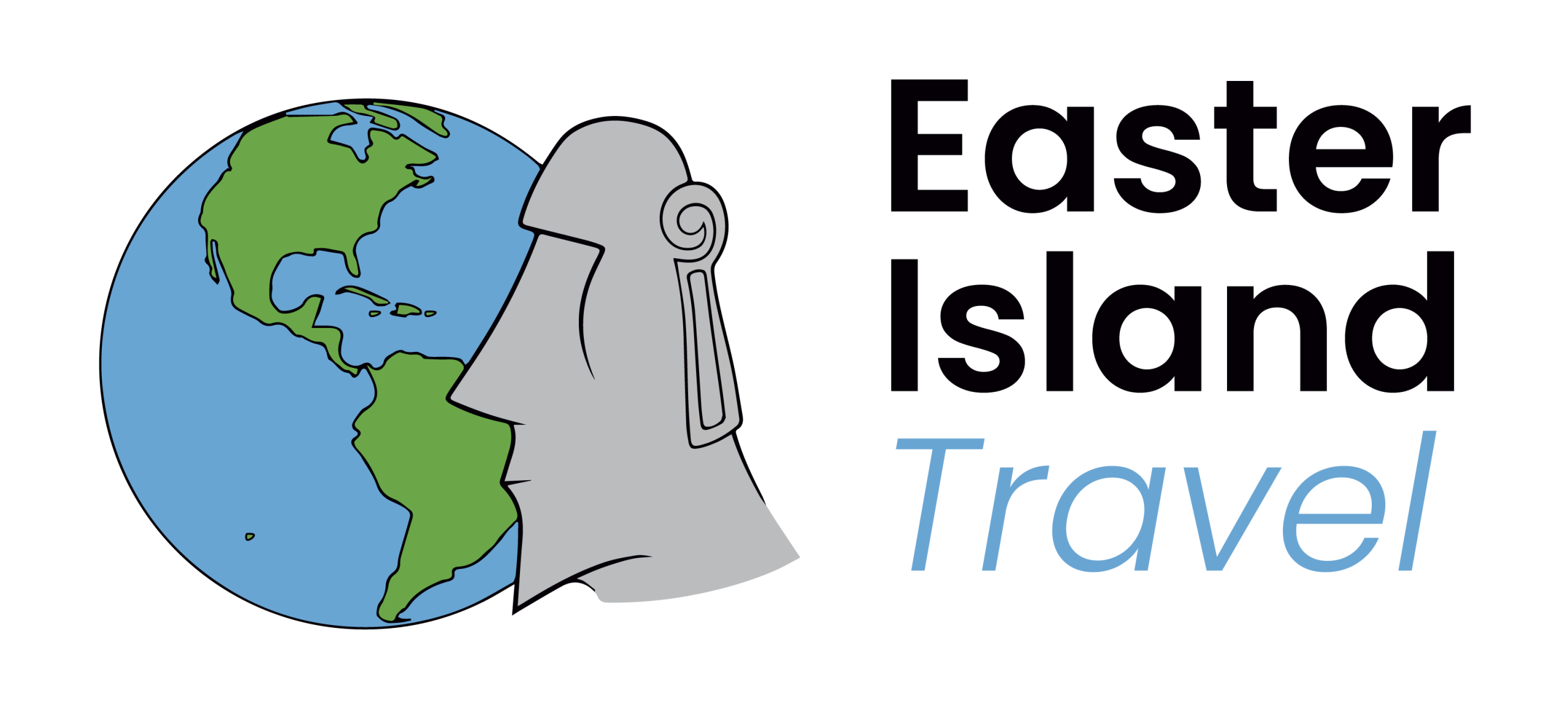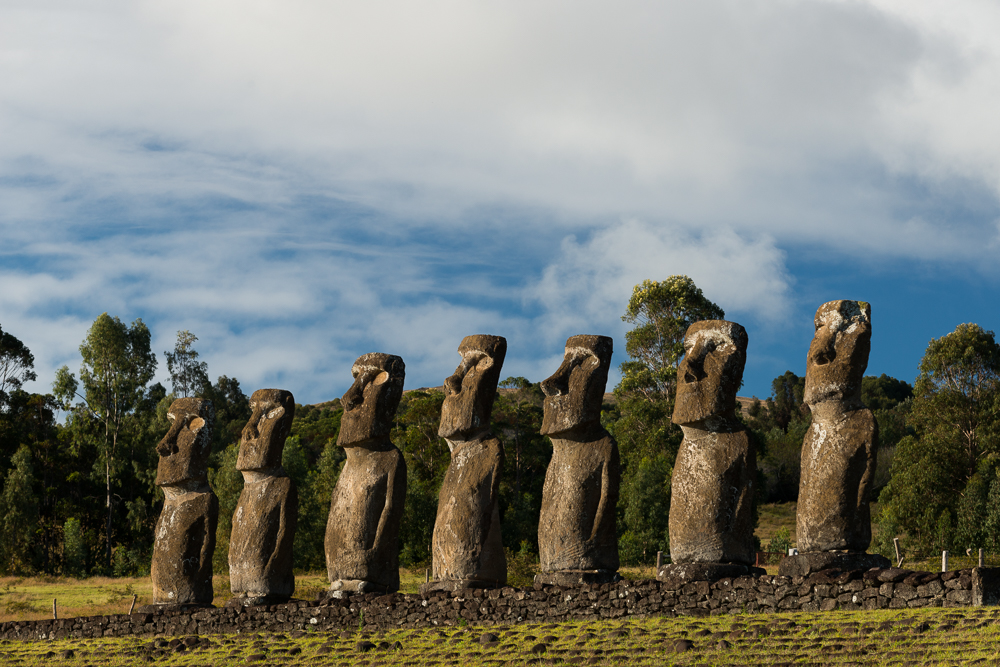Hello, travelers from Easter Island Travel! Today we invite you to discover a very special place in the interior of Rapa Nui: Ahu Akivi. This ceremonial platform, surrounded by green hills and volcanoes, is a space where history, astronomy, and legend intertwine in a unique way.

Ahu Akivi stands out because its moai seem to gaze toward the horizon, reflecting the deep cultural and astronomical knowledge of the ancient Rapanui. While it is not the only wonder of the island, it is certainly a site that sparks curiosity in everyone who comes to explore Rapa Nui.
Located about 2.6 km inland on the flank of Maunga Terevaka volcano, the harmony of its seven moai makes it the perfect place for those looking to experience the island’s culture, history, and energy up close.
The history and construction of Ahu Akivi
Archaeological research indicates that the first phase of Ahu Akivi’s construction began in the late 15th century. A rectangular platform was built on leveled ground, with a 25-meter ramp connecting it to the central plaza. Behind it, there was a ceremonial crematory used for incineration rituals.

By the late 16th century, improvements were added, including a second crematory, and finally, seven volcanic stone moai were erected on the central platform. These monoliths, brought from the Rano Raraku quarry about 15 km away, measure approximately 4.5 meters and weigh around 5 tons each. Their uniformity and harmony stand out compared to other platforms, leaving a lasting impression on visitors and archaeologists alike.
Ahu Akivi and the Miru clan: the power behind the stone
Ahu Akivi lies within the territory of the Miru clan, one of the highest-ranking groups in ancient Rapanui society. Archaeologists believe that the construction of the ahu and its moai took place roughly 150 years before the first European contact, during a period of political stability and economic prosperity. This context allowed the community to dedicate time, resources, and labor to building monumental structures that continue to inspire respect and admiration today.
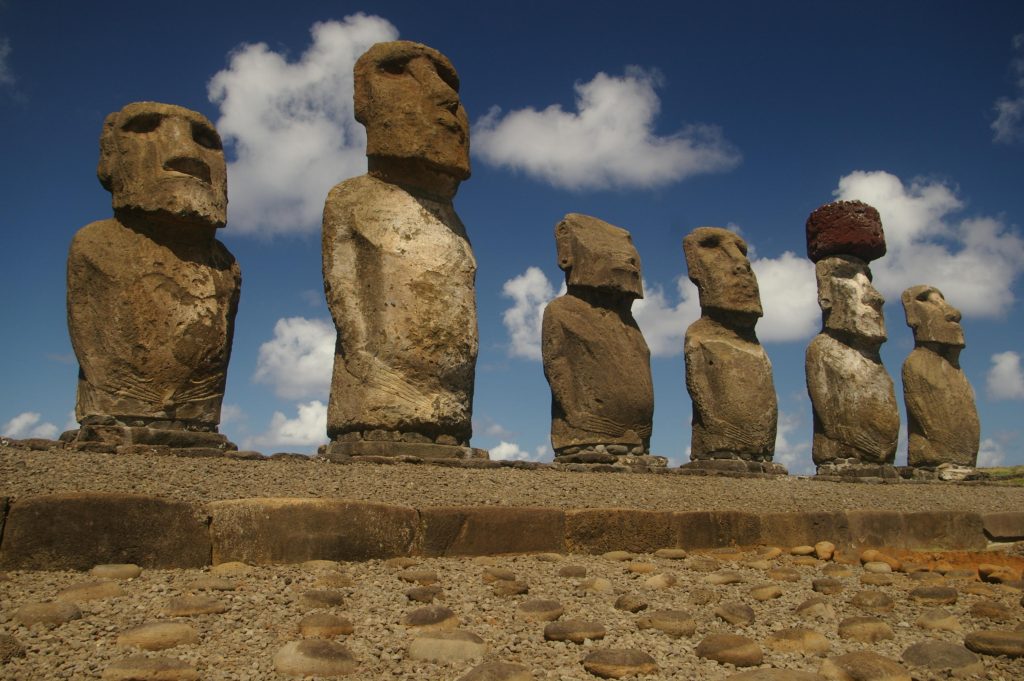
An astronomical marker in the heart of the island
Beyond its ceremonial value, Ahu Akivi also served an astronomical purpose. Its alignment works as a solar marker: the moai face the exact point where the sun sets during the southern hemisphere’s spring equinox (September 21), while their backs face the sunrise of the autumn equinox (March 21).
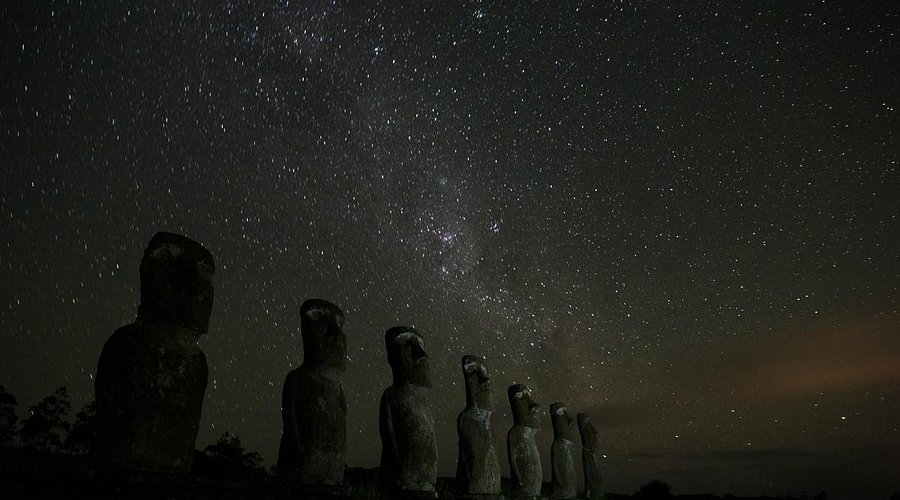
This precise orientation reveals the advanced astronomical knowledge of the ancient Rapanui, who used the position of the sun to track the seasons and organize agricultural and ritual activities.
Why do the moai of Ahu Akivi seem to face the sea?
Although Ahu Akivi is located inland, its moai appear to look out toward the ocean. In reality, their orientation aligns with what was once an ancient village, following the same pattern as most other ahu. From there, the moai were believed to watch over and spiritually protect the community through mana — sacred energy or power.
From certain perspectives, however, the statues appear to gaze toward the vast Pacific, adding a mysterious and almost magical quality to the site.

The story of the seven explorers
While often presented as a theory, this narrative is more of a traditional story that gained popularity through tourism and oral transmission.
Rapa Nui oral tradition links these seven figures to the legend of the seven young explorers sent by King Hotu Matuꞌa before the island’s colonization. Guided by a dream from the priest Hau Maka, these voyagers were said to have discovered the island and prepared it for the arrival of the Rapanui people.
Although historically this connection cannot be confirmed (the moai were carved centuries later), the story remains alive a symbol of exploration, curiosity, and the enduring spirit of discovery.

The restoration that sparked a cultural revival
Ahu Akivi was the first ceremonial site fully restored on Rapa Nui. In 1960, American archaeologist William Mulloy and Chilean Gonzalo Figueroa led a team of 25 islanders who, using simple tools, successfully re-erected the seven monoliths.
The restoration, blessed by Father Sebastián Englert, marked a historic moment: after 150 years, the moai of Ahu Akivi once again faced the horizon. This project initiated a cultural renaissance on the island, inspiring the restoration of other sites and strengthening Rapanui identity.

How to visit Ahu Akivi?
To visit Ahu Akivi, you need a Rapa Nui National Park ticket, valid for 10 days and required to access the main archaeological sites.
This site is often included in our half-day tours, where you’ll explore the area alongside local guides who are experts in Rapanui history, culture, and traditions.
📍 Tips for visiting:
- Wear comfortable shoes and bring water, as the trail is unpaved.
- The best time to visit is at sunset, when the golden light accentuates the moai’s features.
- Respect the marked areas: do not climb the platform or touch the statues.

Experience Ahu Akivi with Easter Island Travel
At Easter Island Travel, we believe that visiting Ahu Akivi is more than an excursion it’s a connection with the living history of Rapa Nui.
Our local guides will help you uncover the meanings behind each stone, explore the secrets of the Miru clan, and experience the island’s ancestral culture with authenticity and respect.
Whether you’re drawn by the story of the seven explorers, the astronomical precision of the moai, or the spiritual energy of the place, Ahu Akivi will leave a lasting impression.
It is more than a ceremonial platform; it is a testament to the intelligence, faith, and cosmic connection of the Rapanui people. Its restoration marked the start of a cultural revival that still inspires travelers seeking more than just a destination an experience that transforms the way you see the world.
With Easter Island Travel, visiting Ahu Akivi means feeling it, living it, and understanding it.

Visiting Rapa Nui is one of the most intense, mystical, and memorable experiences you can have. To ensure your trip is smooth, safe, and deeply meaningful, it’s essential to work with an agency that understands the requirements, permits, tours, and local details.
We at Easter Island Travel are that agency: with local expertise, certified guides, and recognition as the #1 agency on TripAdvisor, we want you to not just visit Easter Island… but to truly feel it, experience it, and remember it forever.
